BACK INTO THE BREAM
Lubin Pfeiffer gets back to basics with one of our most loved recreational fish.
Bream fishing has always been a favourite of mine. In the early years a good friend and I would head down to Birkenhead in his trusty Datsun 1600 to sit on the rock wall using bloodworms for fish cruising the edges. From this early beginning I’ve been fortunate enough to fish for bream right across South Australia, Victoria and Tasmania.
While there are many tried and proven techniques that remain staples while chasing these awesome fish, as with all things fishing there have been some real game-changing new techniques and technology that make catching bream a whole lot easier. What I really love about bream is they are fickle fish that require good presentation and angling skill to get a bite, but there is always a way to fool enough to have a great day out on the water. In this article I’d like to share the techniques I like to employ to catch this fun species.
WHERE TO FISH
Before going into the details of each technique, it’s probably a good idea to run through some areas that are worth targeting. Sadly, our humble bream is another fish that has copped pressure from commercial fishing and is not around in the numbers it once was, but there is still plenty of opportunity and areas where you can have a great chance at a good fish.
I’ve said it countless times in this magazine, and I know the Editor will agree, the sooner our state gets on board with a recreational fishing licence, the better each of our fisheries will be. This includes the bream, which South Australia has plenty of. We need less commercial pressure and increased habitat —it is as simple as that.
Starting on the western side of the state, you can’t go past the Tod River, just out of North Shields near Port Lincoln for big bream. This reasonably small estuary system provides some amazing fishing, and is one of a handful of fisheries where anglers have the chance to catch a trophy-sized fish on foot. Heading further north and on the eastern side of the gulf is one of my favourite big bream locations, Port Pirie. I’ve caught my biggest fish to date here, a true whopper coming in at 54cm. This area is great because not only do you have the main channel of Port Pirie itself, but there are also smaller creeks that branch off this channel that, during the right times, will hold schools of big fish. This is a fickle fishery, as the bream move around a lot with the tides, but it is great fun when all the stars align. Again, this would also hugely benefit from an RFL with improved water quality and a reduction in commercial take. Port Pirie waters have such a high metal pollution level, it is illegal to retain fish for consumption.
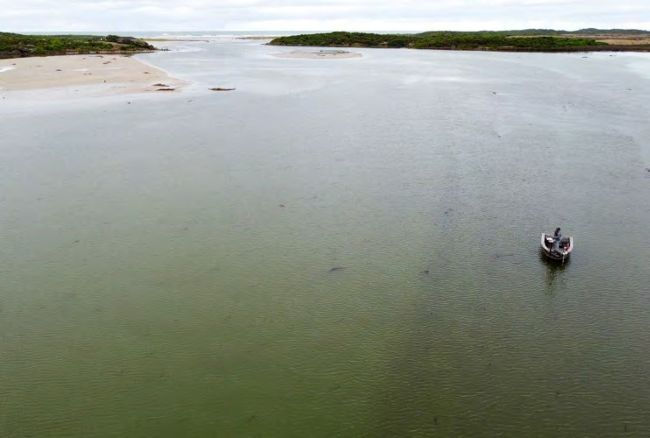
Hopping lures off the flats into deeper water often brings results
Heading south from there and into Gulf St Vincent, you can find Wills Creek near the small town of Price. While this area does only have a smaller population of bream, there’s enough to target them with some consistency. The bonus to this area is you have the chance of a school mulloway or two as well.
Next on my list of favourites for SA water is the Port Gawler area, which consists of a group of mangrove creeks just north of Adelaide. If you can look away from the usual burnt-out stolen cars on the way into the creek, there’s usually a good number of fish in the system. This area benefited hugely from the recent wet winter, with a dose of fresh water coming down the Gawler River that really freshened things up.
While there is still some good fishing to be had around the Adelaide area, I usually find myself driving further south these days in search of less pressured water. The Glenelg River is a true bream fishing Mecca, and one I have been visiting quite regularly over the last several years. While it’s about a five-hour drive from my home area in the Barossa Valley, it’s definitely worth the trip with endless amounts of incredible water to fish. Whether you’re fishing near the mouth or up below the beautiful towering cliffs, there is just so much to do here.
GEAR FOR BREAM
What I like about fishing for bream is that you can have one set-up that will cover all bases for the waters you will find across South Australia, and most areas interstate for that matter. My favourite is a 2.1m, fast action 2-4kg spin stick with a 1000-size spinning reel matched to it. The reel is loaded with a thin 2-3kg brightly coloured braided line. The only variation on this outfit is the leader attached to the end, which changes with the areas fished. This is either to do the angling pressure or the size of the fish.
While sight fishing for large fish in the areas around Port Pirie, I will always opt for a 4.5kg quality fluorocarbon leader. The reason for this is that usually it takes a very long time to find these large fish, which fight really hard, and the last thing I want to do is have them bust me off in the mangroves. Moving into waters where large fish are not a regular occurrence, I will fish either a 2.7kg or 3.6kg fluorocarbon leader. The general rule of thumb is if you are not getting bites, downsize the leader until you do.
SKIPPING PLASTICS
Skipping plastics is not a new technique, but one that is still as important as ever. Whether you’re fishing under-cut mangrove banks, under man-made structures or below rock y banks, being able to get your plastics into the shady areas is a big key to getting a bite. Bream absolutely love sitting right in cover, and this is the only way to get the lure into the zone. There are a few different things that will make this process easier, the biggest of which is the lure selection.
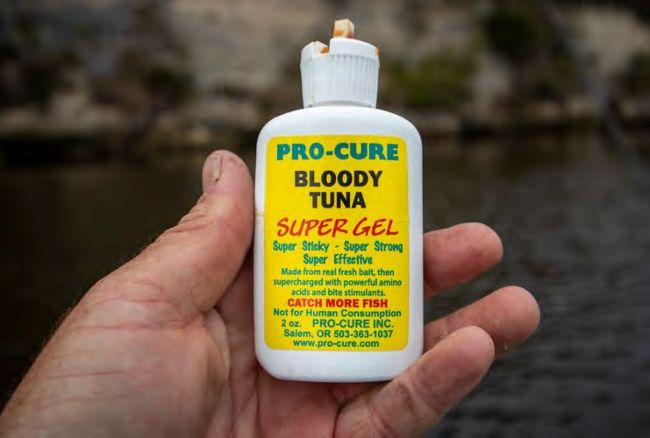
Scents do work
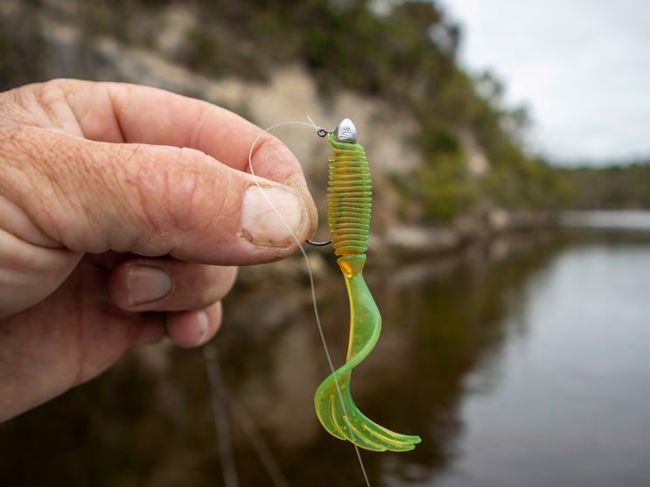
The ever reliable Grub is still a dynamite bream lure
Just like skimming rocks across a farm dam, you want to pick a soft plastic that has flat sides and that will ensure it skims nicely across the surface of the water. While I’ve used plenty of different models over the years, my favourite of late has been the Z-Man 2.5inch PrawnZ. This is an incredibly durable soft plastic that skims easier than any other bait I have used. I like to rig it on the lightest jig head I can get away with, as bream will often eat the lure as it is sinking in the shade.
Using a nice low rod angle and sharp flick, it is possible to get the plastic metres back into the pockets with ease. From there it is super important to get in touch with the bait, but not move it or impede the sink by winding the line. You’ll either feel the bite through the braid and graphite of the rod or see the brightly-coloured braid bounce up, indicating a fish has grabbed it. If a bream doesn’t eat during the drop, I’ll let the lure get near or onto the bottom before lifting it up with a couple of flicks of the rod tip and winds of the reel before repeating the process. Rather than fishing out the whole cast, I usually just burn it in after it passes out the shady zone and cast into the next spot.
SIGHT FISHING
Sight fishing for big trophy bream is, without a doubt, the most rewarding way of catching these fish. Usually, shots can be few and far between, so you need to be prepared to do a lot of staring into the water before one fish or a school may materialise. The biggest key to this style of fishing is the weather, with still and sunny days the best option by far. The other thing to consider is the time of year, as during the periods of daylight saving, the sun has a much larger arc over the sky and will give you a much longer period of prime sight fishing.
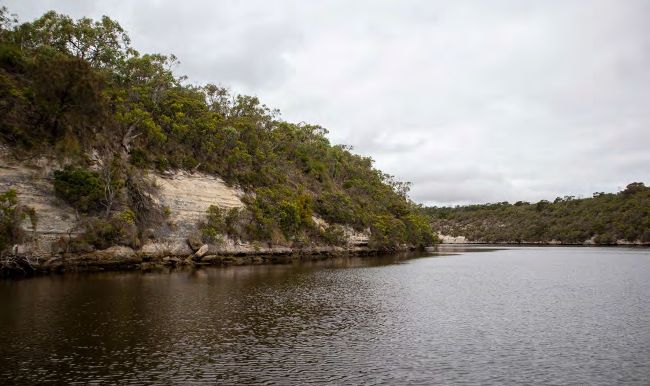
A classic bream bank with plenty of snags to cast at
During sunny winter days it is still possible to sight fish, but the window of opportunity is far less. All my sight fishing is done in sandy tidal creeks that have good visibility during the smaller tidal movements when water clarity is at its best. The trick is to commit totally to sight fish, as there can be a long time between shots, but when it all comes together, it is super rewarding.
My favourite lure for this style of fishing is a Z-Man 2.5inch bloodworm grub, as it is rarely refused by big bream. Depending on the conditions, I’ll fish it on either a 1.7g or 1.4g jig head. It’s important that you can cast the lure far enough, but also that it lands softly enough to not spook the bream. Try to get the lure to the fish so it sees it, but not so clumsily that it spooks it. Small twitches can induce a bite, but also spook the big cagey ones, which just adds to the excitement and frustration of it all!
FISHING WITH FORWARD-FACING SONAR

What it's all about-cracking southern black bream
There’s no doubt that the introduction of forward-facing sonar has changed the fishing world forever. I’ve been using mine for a couple of years now and have had the chance to try it on bream a few times; it’s exciting how much more you can see compared to traditional sounders. For those who don’t know what for wardfacing sonar is, in a nutshell it’s just a sounder that shoots a pulse forward instead of down. It also gives the angler a real-time reading of what’s happening with the fish and how they are reacting to your lure.
Some anglers mount their transducer on the electric motor shaft and others, like me, like to have a separate pole that allows you to swivel the transducer so it faces exactly where you are fishing. There are two most commonly used modes, forward and scout modes. For ward is a narrow beam that goes deep, which is perfect for searching schools of fish that are holding deeper. I like to set mine at about 30m long and 10m deep. I used to adjust the settings a lot, but now find once you get a good gauge on a particular setting, you have a better understanding of fish size. The other setting I use most is scout mode, which is a wide beam of about 110 degrees, but has only a shallow depth capability to around 3m. This is perfect for fishing shallow flats and weed beds. The amazing thing about for ward-facing sonar is that you can see the fish in real time, change baits according to how the fish react, and learn more than you could imagine about fish behaviour.
FISHING WITH BLADES
Blades have been around for years now, but it still amazes me how they catch fish so consistently. These are my go-to lures for fishing any deep water. Most commonly I’ll use blades that are around 40mm in length and weigh 2.3g. One thing that you don’t have to worry about with fishing blades is the colour, as all of them will catch fish, although sticking to the bright lure/dirty water or natural lure/clear water rule of thumb is a good one. The retrieve involves simply getting the lure to the bottom and hopping it back using a consistent and fluid lift and wind technique. You can expect bites on both the drop and the lift, so it is important to stay in touch with the blade at all times.
There is no doubt many anglers have cut their teeth chasing the humble bream and I, like my others, still love to catch them as much now as ever. Hopefully, you’ve picked up a few tips in this article to broaden the range of techniques in your arsenal —or I’ve at least inspired you to go and catch your very first!
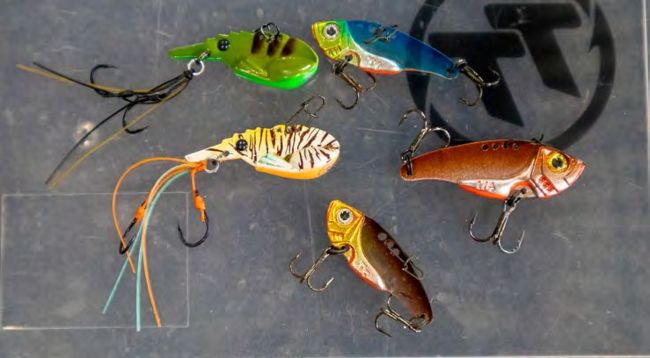
Your tackle box should always hold some blades
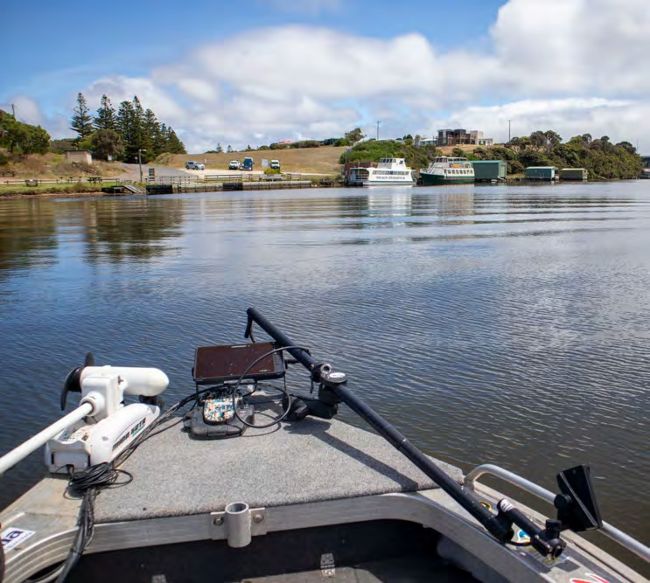
Forward facing sonar and an electric motor make a great combination